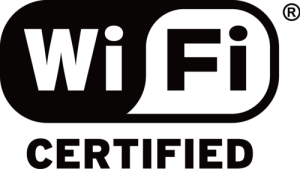What is Wi-Fi (Wireless Internet Communication)
Wi-Fi is a wireless networking technology that allows electronic devices to connect to the internet and communicate with each other without the need for physical cables. It operates by transmitting data over radio waves, based on the IEEE 802.11 standards. Wi-Fi is often used in homes, businesses, and public spaces, enabling devices like smartphones, laptops, and tablets to access the internet and share data within a local network, and the internet.
|
How Does Wi-Fi Work? Wi-Fi works by transmitting and receiving data over radio frequencies, usually 2.4 GHz or 5 GHz, using wireless routers and access points. These devices create a local area network (LAN) that allows connected devices to communicate with each other and the internet. A router directs data between devices and the internet, ensuring efficient data traffic flow. Wi-Fi does not stand for “Wireless Fidelity,” a misconception widely held, but is simply a trademarked name representing the IEEE 802.11 standard. The technology provides wireless internet access without the need for cables, making it a crucial part of modern communication. |
 |
What is a Wi-Fi Router?
A Wi-Fi router plays a central role in your network by:
- Routing Data: It directs traffic between devices and the internet, optimizing data routes.
- Creating Local Networks: It creates a Local Area Network (LAN) for connecting multiple devices within a specific area.
- Connecting to the Internet: It connects devices to the internet via a wired Ethernet connection, while also facilitating communication between devices.
Wi-Fi routers typically operate on two frequency bands:
- 2.4 GHz: Provides broader coverage but slower speeds.
- 5 GHz: Offers faster speeds over shorter distances.
The Impact of Router Placement on Signal Strength
Router placement significantly affects the performance of your Wi-Fi network:
- Central Placement: Place the router in a central area to ensure equal signal distribution across the home or office.
- Elevation: Placing the router higher, such as on a shelf, improves coverage, as Wi-Fi signals tend to spread downward.
- Avoid Obstacles: Walls, metal objects, and concrete can block Wi-Fi signals. Keep the router in an open, unobstructed space.
- Minimize Interference: Electronic devices, such as microwaves and cordless phones, can cause interference. Keep your router away from such devices.
Reducing Wi-Fi Interference
To ensure smooth Wi-Fi operation, minimize interference by:
- Identifying Interference Sources: Devices like microwaves and Bluetooth devices can disrupt signals. Relocate them or use the 5 GHz band to avoid interference.
- Using a Wi-Fi Extender: If the signal is weak in certain areas, a Wi-Fi extender can boost coverage.
- Conducting a Wi-Fi Survey: Use tools like Wi-Fi Analyzer to check for interference and find the least congested channels for your router.
- Separate Frequencies: Smart home devices like Zigbee or Z-Wave can interfere with Wi-Fi. Keep them on separate networks or frequencies.
Improve Wi-Fi Speed and Coverage at Your Home or Office
If you’re experiencing Wi-Fi issues, consider a professional wireless internet connectivity assessment. Contact First Choice Computer Services LLC to optimize your Wi-Fi network and improve performance across your home or office.